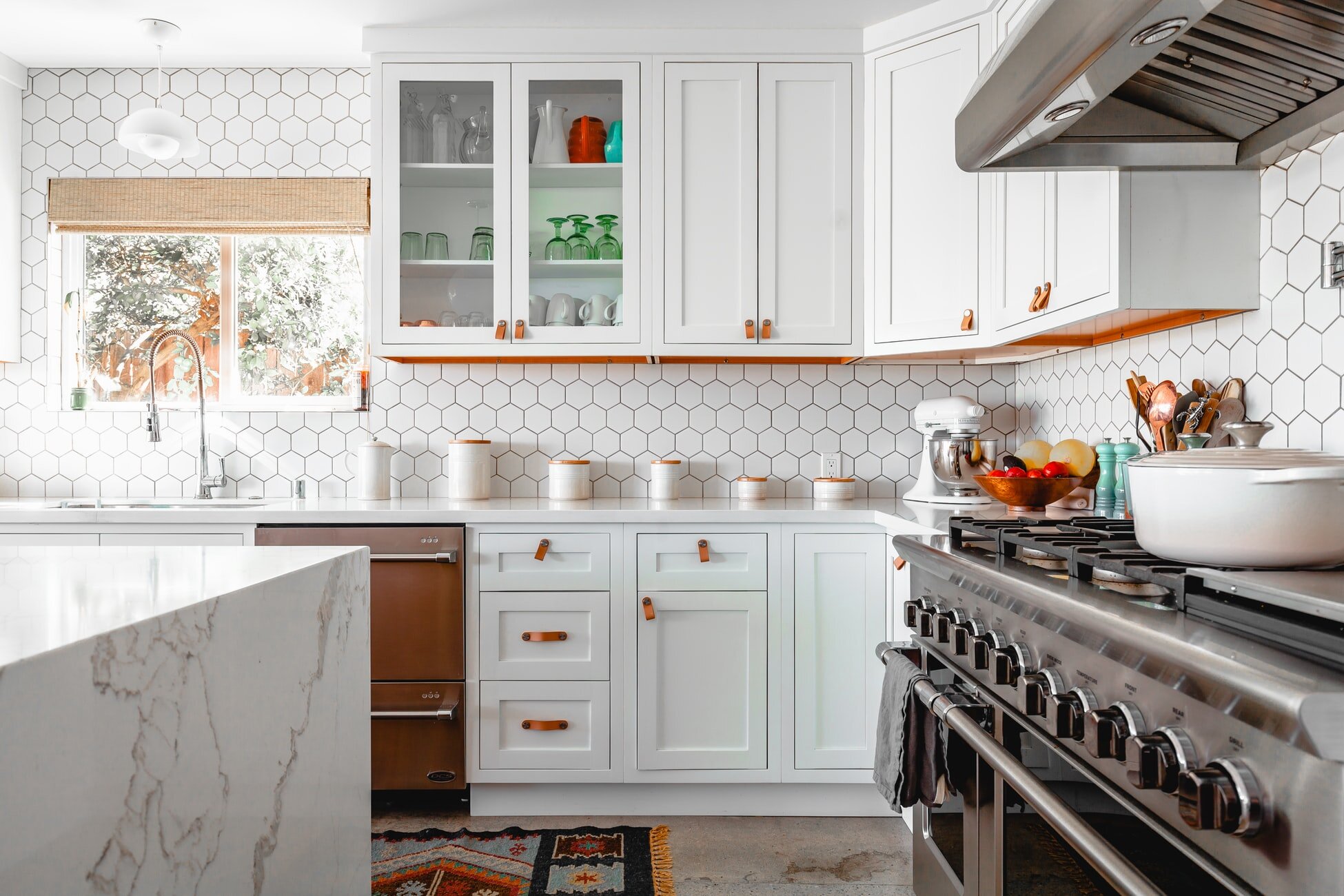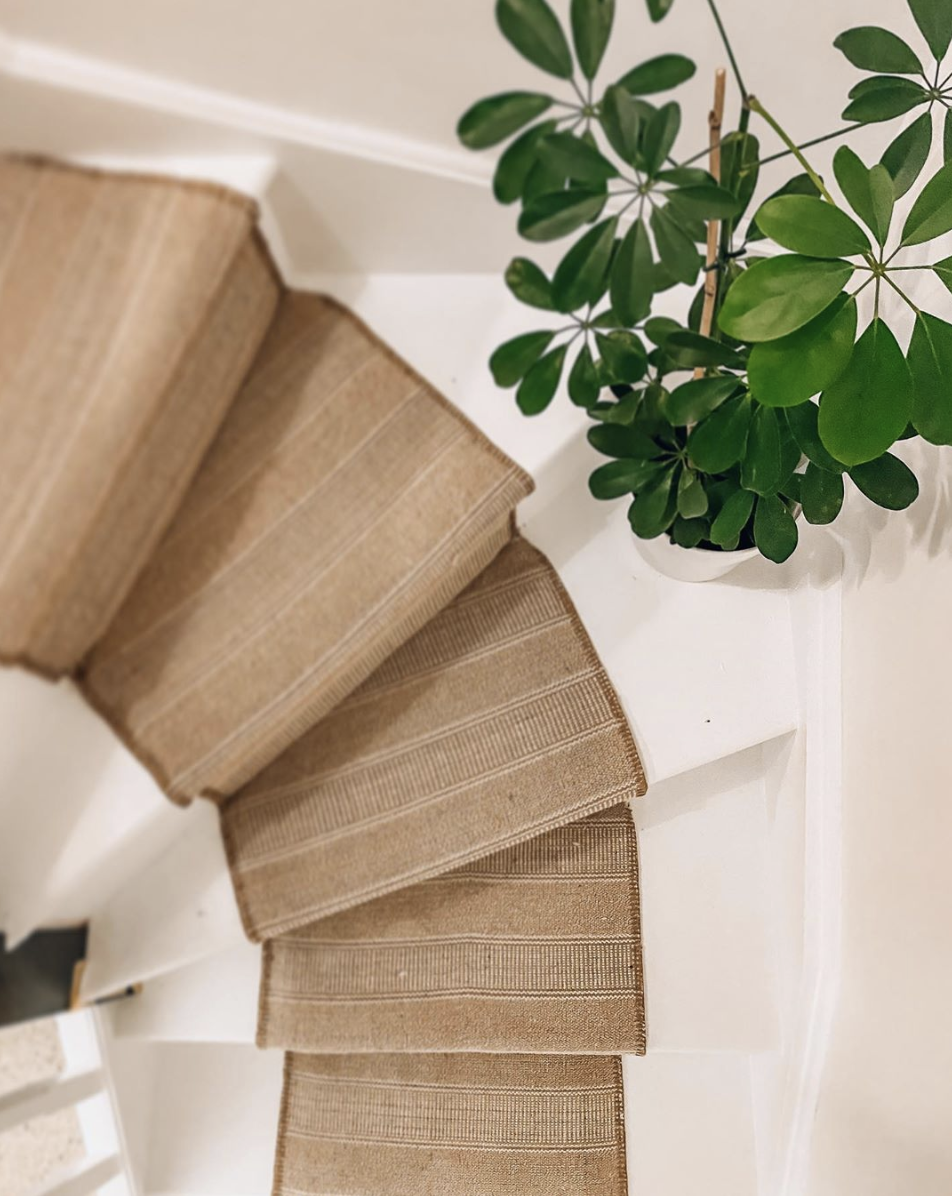A GUIDE TO BUILDING WORK (AND ALL THE EXTRA COSTS THAT GO WITH IT)
/Hi, This is me and our ‘Rat House’ Renovation- A detached 1930’s house in Watford
This blog post is sponsored by Hoppy. All views and opinions are 100% my own.
Whether you’ve owned your property for a while, or you’re on the search for the perfect doer upper. I’m sure if you’re anything like me, you’ve had conversations with your partner, friends or family about “doing a little loft extension”, or “let’s just fill in that side return, surely it can’t cost that much”.
I’m currently living through our second build as I type this. This time round, we bought the doer upper - A detached 1930’s house in Watford, Hertfordshire. We’re adding a 7 metre (7m) ground floor extension to the back for an open plan kitchen/ dining room and a 3.5m first floor extension for an extra bedroom and en-suite. In building terms this is on a much grander scale than our last build which was a 2-bedroom, 1-bathroom loft extension on a Victorian terrace.
(If you want to read more about our 1930’s build, I’ve written about it here).
Perhaps for our third build we’ll buy a plot of land and do a self-build to earn the top building badge of honour. Ah, who am I kidding? After this one I think we’ll be done for a while, if not forever. Although I do think I’ve got the building bug. Just don’t tell my husband. *wink
So, you’ve decided you want to convert your garage into a playroom, you’ve done your Pinterest boards and Sally on Instagram is doing it so it must be affordable and doable right? Think again. One thing no one really talks about is the amount of administration, planning, time and expense which you may incur by having the smallest of renovation work done.
I’m going to take you on a step by step guide to all the extra costs which you need to consider before taking on any building project of any size, because what people don’t tell you is all of this stuff.
So here goes..
Architect
Speak to an expert. The initial talk with an architect will be free, so pick their brain when it comes to what you can and can’t do.
Disclaimer ** Architects don’t know for certain what will or won’t get approved by your local authority, so do check your local planning portal to see what your neighbours have done already. This will give you a good gauge on what is and isn’t possible in your area.
And remember that just because someone down your road has the same extension, it doesn’t mean it will definitely get approved. You need to take into account neighbours objections.
What an architect will do though once you’ve paid your fee is:
· Carry out measured site survey and take required photographs.
· Prepare existing floor plan.
· Prepare existing elevations.
· Prepare existing section.
· Prepare existing site plan.
· Prepare proposed floor plan.
· Prepare proposed elevations.
· Prepare proposed site plan and block plan.
· Prepare proposed section.
· Submit planning application to local authority via the planning portal. – Not all architects will do this, but some might include this in their price.
The Cost
Once you’re ready to get the drawings done, these could cost as little as £1k, but up to £10k depending on the size and detail of the project.
Our architect drawings for our 1930’s detached house with a new 7m ground floor extension and a 3.5m 1st floor were £1.5k + Vat
Structural Engineer
Some architects will have their own structural engineer within their company, but some won’t. The structural engineer drawings are vital for any builder to work from, otherwise all you have is a very pretty, slightly complex line drawing from the architect for the builder to work off- which is basically not very helpful. The structural engineer plans will lay out steel sizes, foundation depths, insulation thicknesses and so on to make sure the build complies with the most up to date building control regulations.
Make sure when you get your quote for the architect drawings that its clear whether the structural drawings are or aren’t included in the price, because quite often this is a surprise to pay-out later down the line.
What you get for your money from your structural engineer is:
· Prepare Structural Drawings.
· Prepare Building Control Drawings.
· Prepare Drainage Drawings.
· Prepare Structural Calculations.
· Prepare Construction Drawings.
· Submit initial Notice for Building Control (Fees not included).
· Submit Water Build Over Contract (if needed- and cost wouldn’t be included)
The Cost
Our structural engineer drawings were included with our architect, but I’ve broken this amount down from the rest, which was roughly another £1,200+Vat
Planning Application
You have your architect drawings and you’re ready to make that planning application. You don’t actually need structural calculations to apply for the building notice – all you need is the architect drawings, so it’s probably best that you wait to see if your plans are approved before paying for the structural calculations as you might need to make changes, or worst case scenario, they won’t be approved and you would have wasted your money.
Some Architects will build this cost in and make the submission for you.
You can apply for planning before owning the property but the current owner or part owners of the property or Leaseholders with at least 7 years lease remaining or any agricultural tenants will need to be informed.
Firstly, the property owners may be more reluctant to sell the property to you. Visits from architects and additional delays caused may lead them to prefer a different buyer, and once you receive planning permission, the seller may choose to put the property back on the market at a higher price. They can now add the fact that planning permission has been approved for the works you have proposed.
Alternatively, you can wait 21 days from completing on the property and you won’t need anyones prior permission to apply.
It’s also worth noting that with most councils you have 3 years to start your building work from when your application is approved. This is three years to get a fork in the ground and get the building control officer out. The work doesn’t need to be finished in this time, but does have to start, otherwise you need to start the application process all over again. It’s worth noting that if your application has multiple works, the permission doesn’t have a timer and you can come back to do other bits any time as long as something has started.
The cost
If you need to apply yourself, the cost varies from £206 - £462 depending on the work, and this price might vary if the property is in a conservation area.
You or your architect will also need to pay £72 for Ordnance Survey
Extract (which is a satellite map which you can purchase online). This must be submitted with any application.
Party Wall acts
If your planning is successful, your local authority might ask you to obtain a party wall act with each of your neighbours. This all depends on how close the neighbouring properties are.
** Even detached houses have to comply with the party wall act, unless your property is within 6 meters of any neighbour’s boundary.
I’ve written a blog post about Party wall acts, which you can read here.
In summary, these don’t have to cost anything and is just a matter of asking your neighbour to sign a legal document which means you will make a mend if any damage is caused to their property during the build. However, they can also become expensive if the neighbour refuses to sign.
But one thing to remember is your neighbour cannot stop your building work happening, even if they refuse to sign. It just means you will have to pay for a party wall award which means having an independent structural engineer draw up a contract.
Also, worth noting that you are meant to give your neighbours 30 days’ notice of work starting.
The cost
They can vary, but if you need to pay a structural engineer to put a party wall award in place it can cost anything from £900 +, and you could have two on your hands if both neighbours don’t comply and want awards in place.
It’s also worth noting that you can’t use a structural engineer which you’ve used before. They must be impartial to both you and your neighbour as they will act as a mediator if any damage is caused.
Building Control
Things are now progressing, you’ve got your planning permission, your structural drawings are done, and you have your party wall act signed. It’s time for you to start building.
Now you must notify your local authority’s building control with intent to start the building work 48 hours prior to starting.
The cost of this for us was £235
Around six weeks later you will need to pay the further building control fee which covers all site visits and will pay for the certificate at the end by building control when they sign the project off. For us this cost was £630
The start of our 1st floor 3.75m extension
Builders Quotes
Depending on what type of work you’re having, you might be planning to project manage the work yourself i.e. organise your own trades, brick layers, plumbers, electricians etc or perhaps you’ll get someone in to project manage it for you. Whichever you decide to do, make sure you get three separate quotes and ask them break down each cost, and don’t be afraid to challenge. Ask if the cost is fixed and final and isn’t an estimate.
Ask if waste and skips will be included in the price. A large skip can cost £400 and can add up pretty quick when filling with old plaster and timber.
In London and the South East, the average cost per m2 is around £1,500-£2,000+. For two-storey extensions, add 50% to the cost of a single-storey extension. If you want to add a bathroom or kitchen, add £5,000-£10,000 for the plumbing. This doesn’t include the tiles and bathroom suites which you want to install, so make sure you keep some budget back for them too.
Here’s me and my pink hard hat ;)
Dropped Kerbs
This might not apply to your property, but if it does and you want your kerb dropping this ranges from £1k - £3.5k per property (depending on how many drop kerbs you require and if it’s a carriage driveway) for your local authority to carry out this work.
Water - Build over agreement
A Build Over Agreement is needed when you want to build over a public sewer and need your local authority's consent to do so ‘in the form of a “build over agreement”.
This can cost in the region of £500.
Driveway
A driveway is something to bare in mind early on as you can apply for it at the same time as your house plans, otherwise you’ll need to make an extra application with an additional cost.
Don’t forget to consider drainage and soakaways.
The cost
A driveway will cost you in the region from £3k + vat upwards.
Our Garden once all the trees had been cleared.
Garden
Your new extension looks lovely, but it’s wrecked your old patio/ garden where the builder used it to store his bricks and cement.
Consider keeping some budget back to re do your patio/ garden.
The cost:
This is very hard to guesstimate. We have had quotes for as much as £16k to level, re landscape, lay patio and decking and this doesn’t include the slabs or decking materials.
For now, this one’s going to have to wait a while.
I hope this is helpful and hasn’t put you off. I certainly wish I had read something like this before I started our first build. It’s always good to have a plan.
Good luck and remember I’m always available on my Instagram @Houselust for a bit of building advice if you ever need to ask me anything else.
Just me having one of those ‘what the hell have we done’ moments whilst looking at our mouldy windows :)















